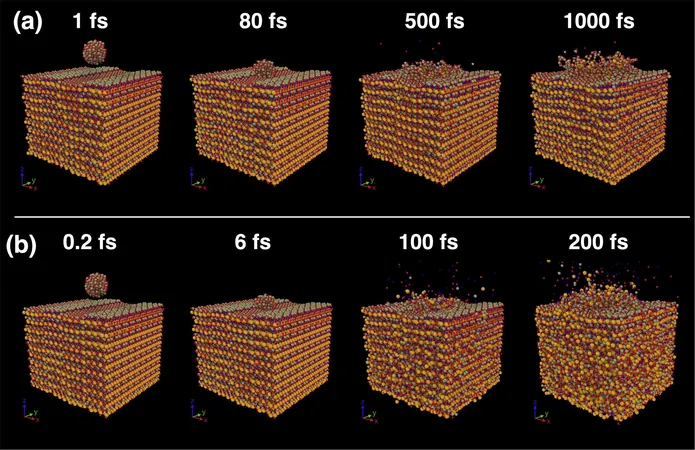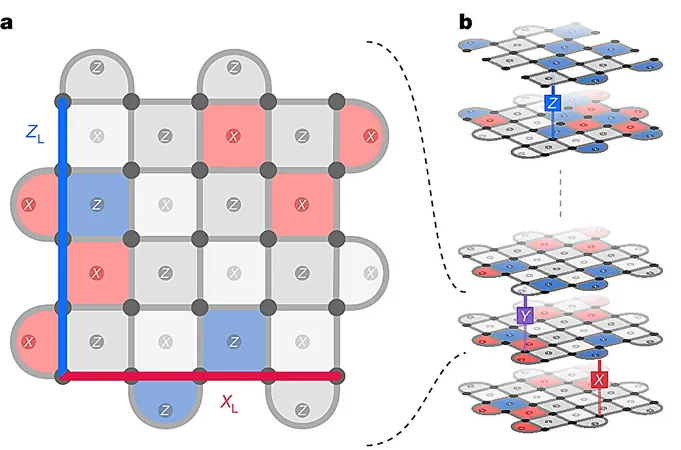
New Findings on Ryugu Asteroid Samples Reveal Impact of Microscopic Meteoroids!
2024-11-29
Author: Liam
Introduction
The mysteries of our solar system unravel further as researchers delve into the secrets of asteroid (162173) Ryugu, a one-kilometer-wide near-Earth asteroid that has piqued the interest of scientists worldwide. Believed to have originated from the asteroid belt between Mars and Jupiter, Ryugu now crosses Earth's orbit and resides approximately 300 million kilometers away from our planet.
Recent Research Findings
Recent groundbreaking research published in The Astrophysical Journal highlights the effects of an invisible threat—microscopic meteoroids. While asteroids like Ryugu are constantly bombarded by debris in the vastness of space, new evidence suggests that even tiny particles can inflict significant damage.
JAXA's Mission and Analysis
The Japan Aerospace Exploration Agency (JAXA) embarked on a mission with its Hayabusa2 spacecraft from 2018 to 2019 to collect samples from Ryugu. Laboratory analysis of these samples unveiled a concerning trend: a distinct dehydration pattern in phyllosilicates—layered silicate minerals, including magnesium-rich serpentine and saponite. This pattern occurs when bonds between oxygen and hydrogen atoms within these minerals break apart.
Impact of Microscopic Meteoroids
Dr. Daigo Shoji from JAXA has shed light on a startling finding: even microscopic meteoroids as small as just 2 nanometers can wreak havoc on Ryugu’s surface. These minute particles gain astonishing velocities, accelerated by the magnetic fields of solar wind plasma, with protons reaching speeds of about 400 kilometers per second.
Computational Simulations and Findings
To understand the depth of this phenomenon, researchers employed computational molecular dynamics simulations to study how silica, magnesium, oxygen, and hydrogen atoms interact during rapid chemical changes. Notably, Dr. Shoji found that when comets, traveling at around 20 kilometers per second, collided with Ryugu, roughly 200 oxygen-hydrogen bonds were broken. However, the impact of nano-sized dust particles moving at speeds up to 300 kilometers per second caused a staggering increase, leading to around 2,000 broken bonds!
Extreme Weather Conditions
Furthermore, the experiments hinted at the extreme weather conditions on Ryugu. With daily surface temperatures fluctuating between approximately 37°C and 67°C and plunging to a chilling -73°C in the dark, the implications of temperature on mineral stability were explored. Surprisingly, while temperature changes were expected to influence dehydration, it was kinetic energy from the meteoroid impacts, reaching temperatures above 1,000 Kelvin (727°C), that prompted significant chemical reactions. Serpentine's instability at temperatures over 600°C played a crucial role in bond degradation.
Potential for Recovery
What’s even more fascinating is the potential for recovery: the atoms disassociated by these dramatic impacts may eventually recombine, producing water and a silanol functional group—essentially a combination of silica, oxygen, and hydrogen. This process could mitigate the ongoing dehydration resulting from the relentless bombardment by these microscopic meteoroids.
Conclusion
As we continue to push the boundaries of space exploration, the findings from Ryugu emphasize not only the complexities of asteroid interactions but also their implications for astrobiology and the origin of water in our solar system. Keep your gaze skyward; the secrets of the cosmos are unfolding before our eyes! What other surprises does the universe have in store for us? Stay tuned!









 Brasil (PT)
Brasil (PT)
 Canada (EN)
Canada (EN)
 Chile (ES)
Chile (ES)
 España (ES)
España (ES)
 France (FR)
France (FR)
 Hong Kong (EN)
Hong Kong (EN)
 Italia (IT)
Italia (IT)
 日本 (JA)
日本 (JA)
 Magyarország (HU)
Magyarország (HU)
 Norge (NO)
Norge (NO)
 Polska (PL)
Polska (PL)
 Schweiz (DE)
Schweiz (DE)
 Singapore (EN)
Singapore (EN)
 Sverige (SV)
Sverige (SV)
 Suomi (FI)
Suomi (FI)
 Türkiye (TR)
Türkiye (TR)